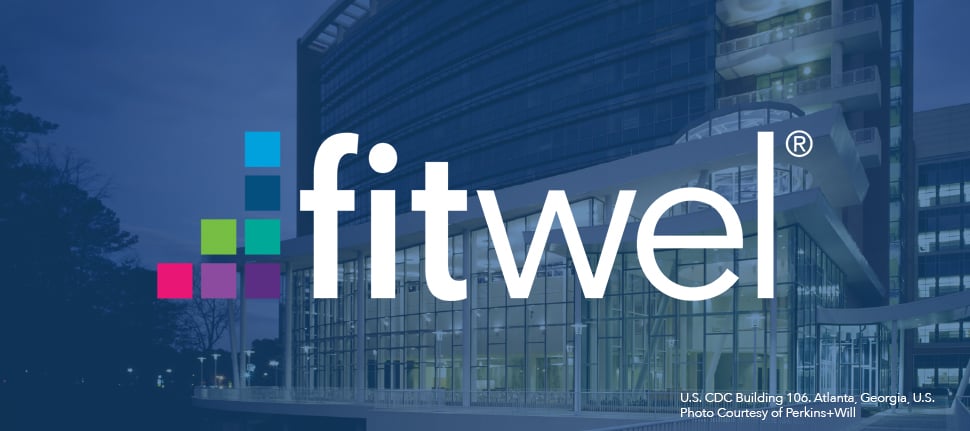Fitwel is a building rating parameter for commercial buildings and for both single-tenant and multi-tenant existing structures that offer best practices and guidelines in designing and operating healthier buildings. Fitwel can as well be utilized as a roadmap to assist in the designing of new buildings under construction. This rating system has gained the attention of green builders for two major reasons:
a) Health and Wellness are presently trending and is becoming more prominent among people. McKinsey & Company already predicted wellness as the ‘next trillion-dollar industry.
b) Fitwel is more budget-friendly than its alternative- the WELL Building Standard. Read 25 Desks Your Office Needs for Health & Wellness
They are established as a collaborative initiative coordinated by the United States Centers for Disease Control and Prevention in conjunction with the General Services Administration. Fitwel offers the roadmap for creating, constructing, and operating healthy buildings. Fitwel is managed by the Center for Active Design. They also provide third-party certification.

Fitwel Requirement
Probably the greatest advantage of Fitwel is that there are no “essentials” or prerequisites that would keep a structure from being qualified to win a Fitwel certification. There are a base number of discretionary points that should be earned (90 out of 144 conceivable), yet no Fitwel requirements that “needs to” be sought after.
63 proof-based procedures have demonstrated to expand the wellbeing and prosperity of structure occupants, which can be categorized into 12 groups:
- – Location
- – Building Access
- – Outdoor Spaces
- – Entrances + Ground Floor
- – Stairwells
- – Indoor Environments
- – Workspaces
- – Shared Spaces
- – Water Supply
- – Cafeterias + Prepared Food Retail
- – Vending Machines + Snack Bars
- – Emergency Procedures
Fitwel’s Seven Health Impact classification include:
- – Impacts of Community
- – Minimizes Morbity + Absenteeism
- – Enhances Social Equality for Vulnerable Groups
- – Improves Physical Activity
- – Promotes Tenant Safety
- – Promotes Healthy Food Choices
- – Instills Feelings of Well-Being
Fitwel Scoring
Fitwel certifications are rated either one, two, or three stars based on the points earned. This is the scoring breakdown.
- 1 star (90-104 points)
- 2 stars (105-124 points)
- 3 stars (125-144 points)
Points are allocated to each of the Fitwel strategies dependent on a mix of two things: one is the magnitude of the effect a technique has on health and wellness and the other being how much proof there is to demonstrate the connection between the procedure and improved wellbeing and wellness. For instance, in the Workspaces section, a structure can earn 3.33 points if it gives a dominant part of the structure workspaces with perspectives on nature, however just 0.33 points for giving operable concealing in inhabitant spaces. This is likely because there are significantly more investigations about how perspectives to nature can increase its health, profitability, and mind-set of laborers than there are studies and proof about giving operable concealing in inhabitant spaces.
Why is Fitwel Important?
As per Fitwel, there are three noteworthy reasons structures ought to consider getting Fitwel certified:
– Roughly 49% of structure proprietors are eager to pay more for structures that have the propensity to affect wellbeing positively.
– Roughly 45% of speculators claim sway ventures (speculations revolved around natural, social, and administration execution) or are keen on owning them.
– Around 97% of clients report convenience, and 84% see how their structures bolster wellbeing on account of access to the data and execution information expected to certify an undertaking.
What are Fitwel’s Methods for Improving Buildings?
You are required to comply with specific Fitwel best practices to be Fitwel certified.
Fitwel focuses on two types of structures.
a. Workplace structures
b. Residential structures.
Let us examine the strategies adapted for each.
Six Strategies for Workplace Buildings
These are a few of the best practices proposed by Fitwel to create healthier buildings in the workplace.
Area – improving mobility and walkways to help more exceptional opportunities for physical action, social value, and cultivate positive effects on communal wellbeing.
Building Access – offering support for carpools, bicycles, and pedestrians to help multi-modular access to structures and open doors for standard physical movement.
Outdoor Spaces – making arrangements and strategies for open-air comforts, for example, strolling trails and smoke-free environment to help mental and physical wellbeing.
Passages and Ground Floor – building door frameworks and fitting lighting to advance improved air quality and access to wellbeing advancing amenities.
Stairwells – creating available, unmistakable, and well-structured staircases to exhibit a helpful path for structure inhabitants to add physical exercises to their day.
Indoor Environment – executing smoke-free building arrangements and giving an interior that is asbestos-free to restrain delayed presentation to destructive airborne substances and pollutants in indoor situations
Procedures for Improving Workplaces
Here is a portion of the methods Fitwel proposes for making more beneficial private structures:
Habitable Units – offering sunlight, operable shading and views at workspaces to help with diminishing morbidity and enhancing solace, while additionally imparting feelings of prosperity.
Shared Spaces – building kitchen offices and activity space to advance wellbeing outside of the individual workspace.
Water Supply – making ADA compliant water supply available on each floor to permit occupants access to freshwater. Read more in our article. “Why Providing Employees With Great Water Is Necessary.”
Eateries and Groceries – building up principles for sound nourishment and refreshments that must be met by all on location sit-down cafés to expand access to more beneficial eateries and sustenance decisions.
Snack Bars and Vending machines – offering price discounts for healthy snacks to help invert the adverse wellbeing effects of conventional vending machines.
Crisis Procedures – giving an Automated External Defibrillator and related testing timetable to improve coordination and practicality of crisis reaction.

Five Facts You Need To Know About Fitwel
1. It is a point-based system:
Just like we already stated, the 60 strategies required for certification are provided, and each procedure is allocated with points. Each level is identified through project stars- 1 star starts from 90 points, 2 starts ranges between 108 to 125, and three stars at 126 to 144.
2. No prerequisites- each point is voluntary:
There are no restrictions or expenses that hinder any project from earning certification. This is because each strategy is optional. When you apply, you’ll be furnished with data concerning why the technique is significant with connections to the wellbeing information that upheld its incorporation. When adhering to the standard, you’ll get feedback relating to your ranking. The Center for Active Design makes it a stride further, requesting opportunities for development and the data expected to enable you to achieve your goal.
3. It depends on proof-based information
Each point is based on relevant information that has been tried and assessed. Procedures are weighted, giving more points to the methodologies that have demonstrated to effect individuals’ health and well-being in many ways. Designing a lactation room gets your project a higher position at 5.66points, with your building’s Walk Score in a close second, and indoor ventilation quality third.
4. Access to online documentation and application incorporation
At present, as Fitwel is as yet being tried, just a select group are being offered access to start an online Fitwel venture portfolio. The site indexes the majority of your undertakings, and you can correlate them with each other. Everything is locked in this portal — documentation, credit information, projects, and documentation credits.
5. Fitwel provides a diplomat and champion program
The ambassador program offers training and professional development. It is still being developed, however, note that anybody can join in the Fitwel site to be a diplomat. You will have full access to the scorecard, and you will get updates on the Fitwel releases. Champions are considered the early adopters of Fitwel. Regardless of whether you’re an engineering or design firm, or a government establishment, for example, GSA, you can be an ambassador of Fitwel.
How Do You Get Fitwel Certified?
To earn fitwel certification, visit https://fitwel.org
The Fitwel Certification Process
A twofold procedure is utilized to assess every submission and allocate a score. For certification, 90 to 104 points are required for a one-star rating; 105 to 124 gets two stars, and 125 to a limit of 144 points earns three. When a task is enrolled and the documentation transferred, Fitwel will issue a report for remarks, explanation, and extra demands. The entire procedure and last certification with a star rating can take as long as 12 weeks. Neither preconditions nor on location check is required, and certification is useful for a long time. Like WELL, the program is dynamic; as new research discoveries are released, they will be fused into new forms of Fitwel. Certification not just adds to guaranteeing increasingly substantial workplaces and causing concern for worker’s wellbeing, yet when attempted by building management or a property designer optimizes the property’s reasonably estimated worth.
Fitwel versus LEED and WELL
While LEED centers primarily around building infrastructure, both the Fitwel and WELL frameworks center around the client experience and office condition, although not as thorough too, which drives a higher amount of execution and focused differentiation through an increasingly unpredictable procedure at a more expensive rate point (which can be a hindrance for specific tasks), the Fitwel process is quicker, more affordable, open, automatic, and strongly useful. This is uplifting news for customers with broad portfolios or the individuals who might not possess the financial limit or energy for a full WELL certification process yet need to make progressively healthy workplaces. We wrote a related article comparing WELL and FITWEL: To Be Well or Fitwel .
.
Related Questions
What is Fitwel Scoring parameter? Fitwel certifications are rated either one(90-104 pts.), two(105-124 pts.), or three (125-144pts.) stars. This is based on the points earned by projects.
What is the greatest advantage of Fitwel? There are no “essentials” or prerequisites that would keep a structure from being qualified to win a Fitwel certification as long as you earn 90-144 pts.
Join Open Sourced Workplace




